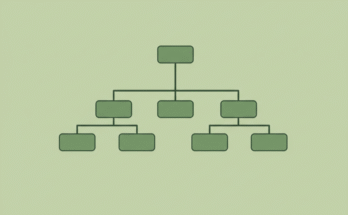Hey there, blockchain enthusiast! Whether you’re new to the world of decentralized technology or have been around for a while, you’ve probably come across terms like “Layer 1” and “Layer 2” when discussing blockchain networks. These buzzwords are thrown around a lot, but what do they actually mean? And why should you care? Don’t worry, I’ve got you covered! Let’s break it all down in simple, friendly terms.
![[Layer 1 vs Layer 2 Blockchain] What's the Real Difference?](https://mineatech.com/wp-content/uploads/2025/06/layer-1-vs-layer-2-blockchain-whats-the-real-difference.png)
What is Layer 1?
Layer 1 refers to the base layer of a blockchain network essentially, the main blockchain itself. Think of it as the foundation of a house. Without it, nothing else can stand. Popular examples of Layer 1 blockchains include Bitcoin, Ethereum, Solana, and Cardano.
Layer 1 blockchains are responsible for handling the core functions of a network. This includes processing transactions, managing security, and ensuring decentralization. Everything happens directly on this layer.
Key Features of Layer 1
- Decentralization: Transactions are validated by a distributed network of nodes.
- Security: Strong cryptographic protocols ensure the integrity of the blockchain.
- Consensus Mechanisms: Methods like Proof of Work (PoW) or Proof of Stake (PoS) are used to validate transactions.
The Problem with Layer 1
While Layer 1 blockchains are powerful, they often face scalability issues. As more people use the network, it can get congested, leading to slower transaction speeds and higher fees. For example, during peak times, Ethereum users have faced sky-high gas fees just to complete a simple transaction.
What is Layer 2?
Layer 2 solutions are built on top of Layer 1 blockchains to address their limitations, especially scalability and transaction speed. If Layer 1 is the foundation of a house, think of Layer 2 as an extension or an extra room added to accommodate more people.
Layer 2 essentially takes some of the workload off the main blockchain by processing transactions off-chain or in a more efficient way. Once those transactions are finalized, they’re bundled together and sent back to the Layer 1 blockchain for recording.
Popular Layer 2 Solutions
- Lightning Network (for Bitcoin): Designed to enable faster and cheaper Bitcoin transactions.
- Polygon (formerly Matic) (for Ethereum): Aims to improve Ethereum’s scalability and reduce gas fees.
- Arbitrum and Optimism (also for Ethereum): Use rollups to process transactions off-chain while maintaining security.
Key Features of Layer 2
- Scalability: Can handle thousands (or even millions) of transactions per second.
- Lower Costs: Transactions are processed more efficiently, reducing fees.
- Faster Speeds: No more waiting for ages to confirm your transactions.
The Real Difference Between Layer 1 and Layer 2
→ Alright, so now that we’ve defined both layers, let’s compare them side by side:
| Feature | Layer 1 | Layer 2 |
|---|---|---|
| Definition | The main blockchain network | A secondary framework built on top of Layer 1 |
| Purpose | Handles core functions like security and consensus | Solves scalability and speed issues |
| Transaction Speed | Slower due to network congestion | Much faster |
| Transaction Costs | Higher fees during peak times | Lower fees |
| Examples | Bitcoin, Ethereum, Solana | Lightning Network, Polygon, Arbitrum |
→ In short: Layer 1 is the backbone of blockchain technology, while Layer 2 is the superhero swooping in to save the day when things get too crowded.
Why Do We Need Both?
You might be wondering, if Layer 2 is so great, why not just use it for everything? Well, it’s not that simple. Layer 1 blockchains are essential because they provide the ultimate security and decentralization. Without them, there would be no trust in the system.
However, as blockchain adoption grows (and let’s face it. It’s growing fast!), we need solutions like Layer 2 to scale up and make these networks usable for everyone. Imagine trying to run every single transaction in a global economy directly on Bitcoin or Ethereum. It would be painfully slow and expensive. By combining the strengths of both layers, we get the best of both worlds, rock-solid security from Layer 1 and lightning-fast transactions from Layer 2.
What Does This Mean for You?
If you’re a casual user or someone just dipping their toes into crypto, you might not even realize when you’re using a Layer 2 solution, it’s often seamless! For example:
- When you send Bitcoin using the Lightning Network, you’re benefiting from a Layer 2 solution.
- If you trade NFTs on an Ethereum-compatible platform like Polygon, you’re using Layer 2 technology.
For developers and businesses, understanding these layers is crucial. If you’re building an application on Ethereum but want it to be cost-effective and scalable, integrating a Layer 2 solution like Arbitrum or Polygon could be a game changer.
The Future of Blockchain Layers
→ As blockchain technology evolves, we’re likely to see even more innovation in both Layer 1 and Layer 2 solutions. For instance:
- Ethereum is transitioning to Ethereum 2.0 (a major upgrade to its Layer 1 protocol) to improve scalability and energy efficiency.
- New Layer 2 solutions continue to emerge with even more creative ways to reduce congestion and costs.
Ultimately, these layers work together to make blockchain technology accessible to everyone from developers and businesses to everyday users like you and me.
Wrapping It Up
→ So there you have it, the real difference between Layer 1 and Layer 2 blockchains! To sum it up:
- Layer 1 is the core blockchain network that ensures security and decentralization.
- Layer 2 is an additional layer designed to improve speed and scalability.
Both layers are essential pieces of the puzzle that make blockchain technology so exciting and revolutionary. Whether you’re sending crypto payments, minting NFTs, or exploring decentralized apps (dApps), these layers are working behind the scenes to make it all happen.


![[Blockchain Beyond Cryptocurrency] The Untapped Potential Across Industries](https://mineatech.com/wp-content/uploads/2025/08/blockchain-beyond-cryptocurrency-the-untapped-potential-across-industries-348x215.png)
![What Is a Blockchain Consensus Algorithm? [Explained Simply]](https://mineatech.com/wp-content/uploads/2025/08/what-is-a-blockchain-consensus-algorithm-explained-simply-348x215.png)